Soap makers get chemical burns primarily from lye (sodium hydroxide or potassium hydroxide), an essential but caustic ingredient in soap making. When lye contacts your skin, it can cause immediate pain and continue damaging tissue even after initial exposure. You'll need proper safety equipment including gloves, eye protection, and adequate ventilation to prevent injuries. Understanding proper handling techniques like adding lye to water (never water to lye) can greatly reduce your risk. Proper preparation creates the foundation for safe and successful soap crafting.
Understanding Lye: The Caustic Catalyst in Soap Making
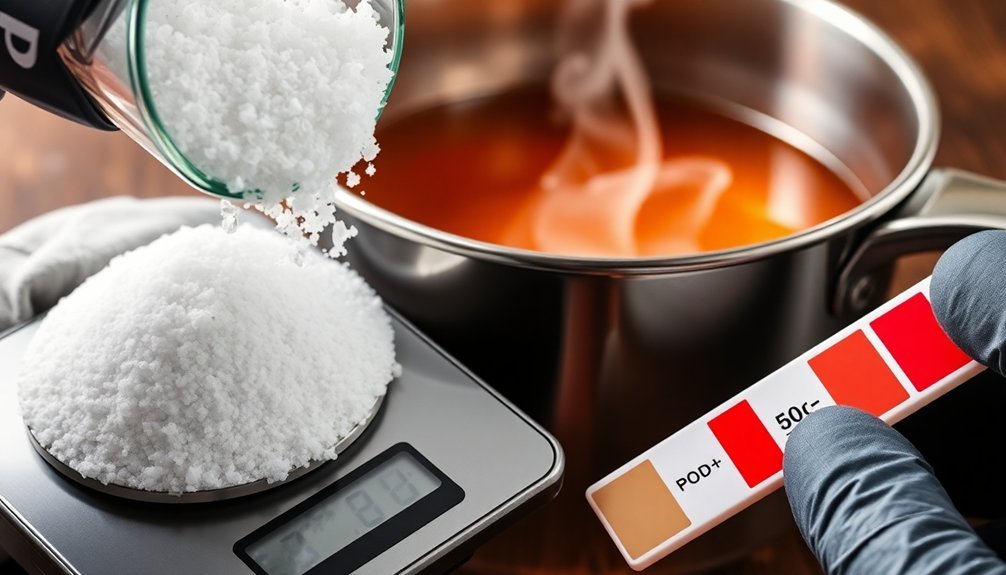
Although essential to the soap-making process, lye demands careful respect and handling to prevent painful injuries. When you're working with sodium hydroxide (NaOH) or potassium hydroxide, you're dealing with caustic substances that can break down organic materials—including your skin.
The danger lies in lye's persistence; it continues to damage tissue even after initial contact. That slippery sensation you might feel on your skin isn't soap forming—it's the beginning of a chemical burn. Proper safety measures, including wearing gloves, protective clothing, and goggles, are non-negotiable aspects of soap making.
Remember that concentrated lye poses greater risks than diluted solutions. Understanding this distinction helps you implement appropriate precautions to protect yourself while still harnessing lye's transformative power in the saponification process.
Essential Safety Equipment for Preventing Chemical Burns
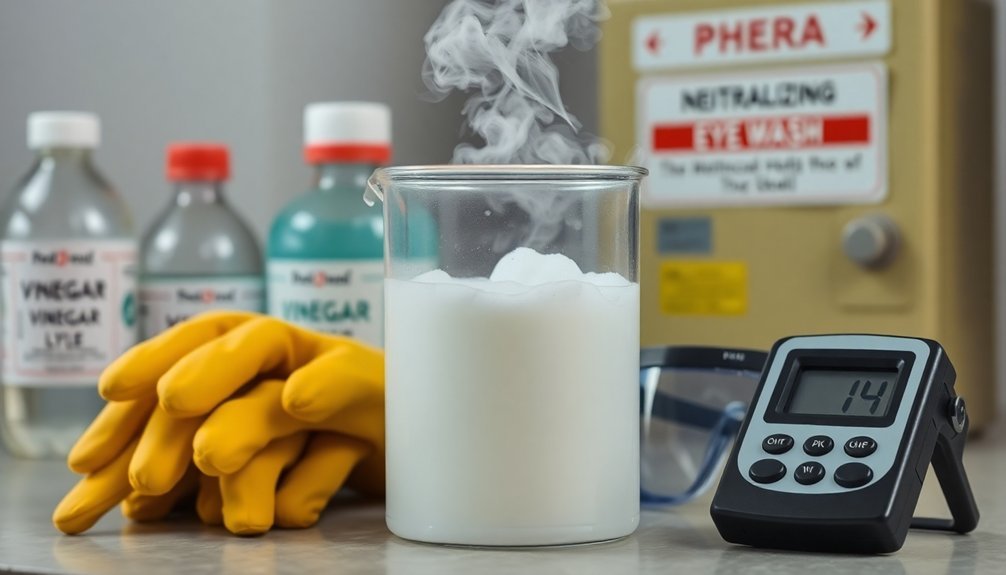
When working with caustic materials like lye, proper safety equipment serves as your frontline defense against potentially devastating chemical burns.
Always wear safety glasses or a full-face shield when handling lye solution to protect your vulnerable eyes from splashes that could cause permanent damage.
Don't compromise on protection—rubber gloves are non-negotiable whenever it's necessary to handle caustic ingredients. A rubberized apron adds another vital barrier between your skin and potentially harmful substances, including essential oils.
Ensure it's safe to use lye by keeping emergency washing facilities nearby. A hose or shower access allows for immediate rinsing if accidents occur.
Maintain a well-ventilated, organized workspace so you can move freely and access safety equipment quickly when needed.
Proper Handling Techniques for Caustic Ingredients
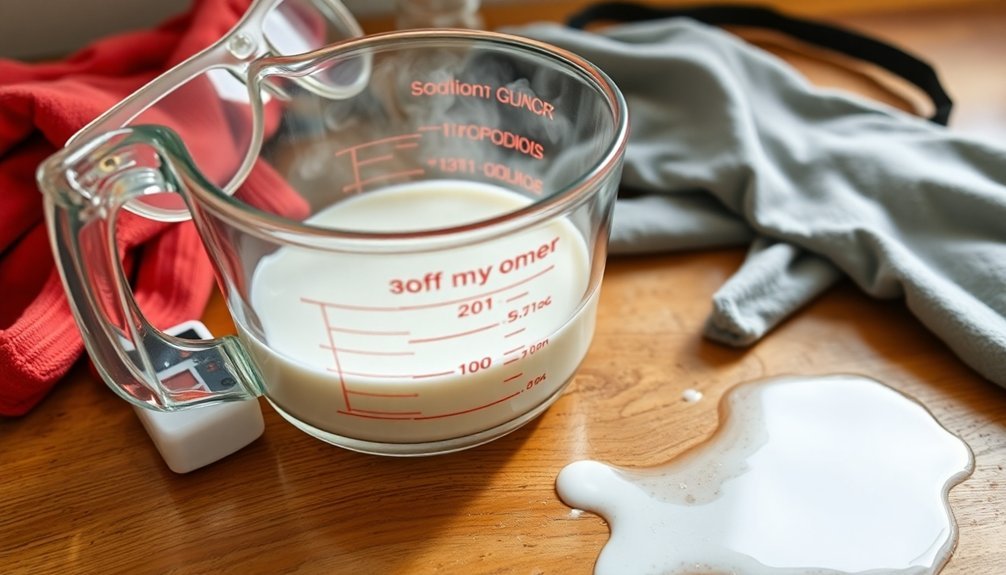
The foundation of safe soap making rests on mastering proper handling techniques for caustic ingredients like lye. When you make soap using the Cold Process method, always add lye to water—never the reverse—to prevent dangerous splashing from the exothermic reaction.
Work in a well-ventilated area with a heat-resistant container when mixing lye water. As a responsible soap maker, you'll need to prioritize protection by wearing eye protection and long sleeves to minimize skin exposure risks.
Keep emergency resources nearby, such as running water or a hose, for immediate rinsing if accidents occur. Understanding first aid procedures for chemical burns is equally important—flush affected areas with cool water immediately and seek medical attention if needed.
Immediate Response Protocol for Lye Exposure
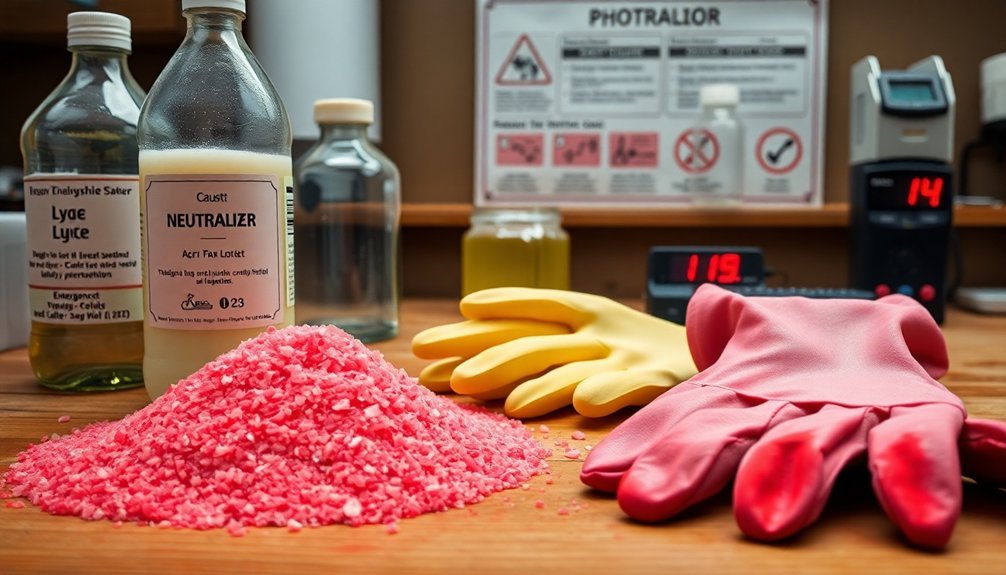
Should you experience any lye contact with your skin, act immediately by flushing the affected area with running water for at least 15-30 minutes. This dilutes the caustic substance and prevents deeper chemical burns.
The slippery sensation on your skin is a warning sign of lye exposure—don't ignore it.
After thorough rinsing, wash with soap to remove any lingering lye and oils that might continue to damage your skin.
Never attempt to neutralize lye with vinegar or other acidic substances, as this creates additional heat and worsens the burn.
Seek medical attention if burning sensations persist after rinsing.
Remember that chemical burns can continue causing damage even after initial treatment, so professional evaluation is essential for significant exposures.
Creating a Safe Soap Making Environment
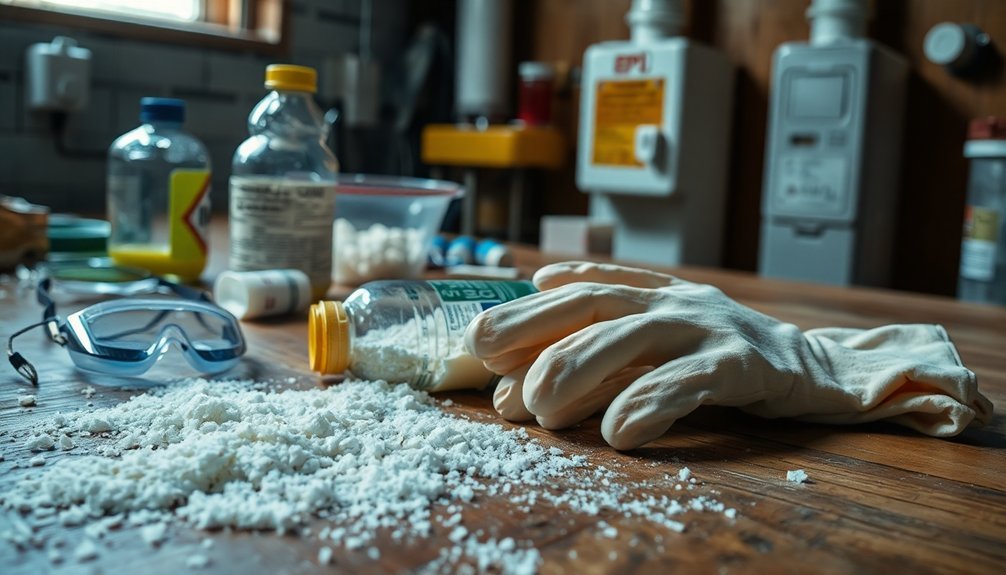
Establishing a dedicated and properly equipped workspace forms the foundation of safe soap making practices.
When making soap, always make sure your area is well-ventilated to prevent inhaling harmful fumes that lye produces.
Personal protective equipment isn't optional—it's essential. Wear gloves, eye protection, and long sleeves to shield yourself from potential chemical burns.
Don't forget to include a rubberized apron for an extra layer of protection against lye spills and hot oils.
Keep emergency resources accessible—position a hose or shower nearby for immediate rinsing if accidents occur.
Regularly review and practice your safety protocols with anyone who shares your workspace.
Frequently Asked Questions
Why Does My Homemade Soap Burn My Skin?
Your homemade soap burns your skin because it likely contains unreacted lye. You haven't cured it long enough (2-3 weeks needed) or you've measured ingredients incorrectly, creating an overly alkaline product.
Why Is Making Soap a Chemical Reaction?
When you make soap, you're triggering saponification – a chemical reaction where lye breaks fatty acid bonds in oils. This transformation creates new compounds (soap molecules) with different properties than your original ingredients.
How Do You Get Rid of Chemical Burns From Soap?
Rinse your burn with cool water for 20 minutes, then wash with mild soap. Don't use vinegar or acids—they'll worsen the burn. Seek medical help if you notice blistering or persistent pain.
Why Does It Burn When I Wash With Soap?
Soap burns when you wash because it disrupts your skin's natural pH or irritates existing damage. Your skin might be sensitive, dry, or you could have a condition like eczema that makes soap's ingredients feel painful.
In Summary
You're handling a powerful chemical reaction when making soap. Lye demands respect—it's caustic by design to transform oils into soap. Don't underestimate proper safety gear and handling protocols—they're your shield against painful burns. If exposure occurs, you'll need to act quickly with neutralizing agents. By creating a dedicated workspace with proper ventilation and organization, you're setting yourself up for safe, enjoyable soap making for years to come.

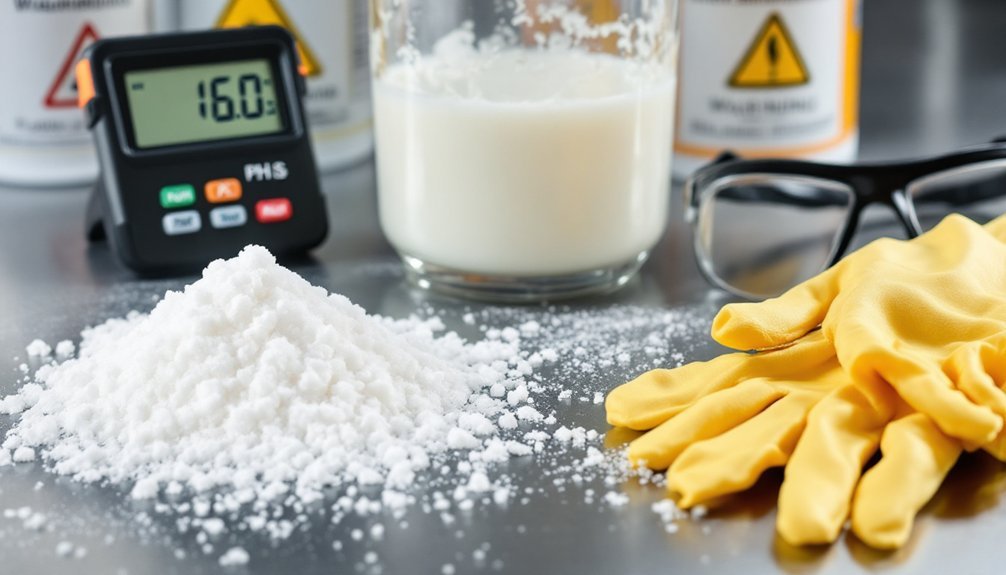



Leave a Reply